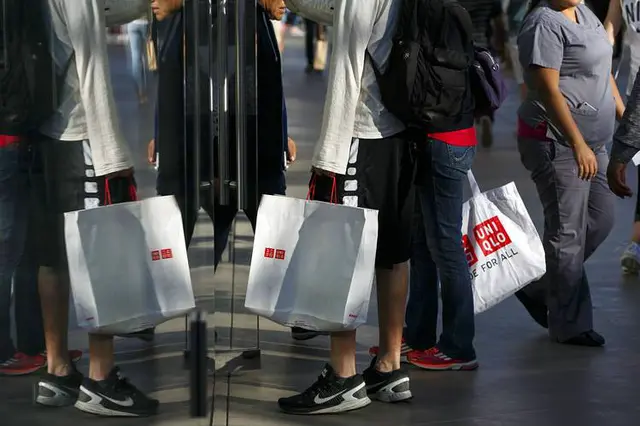Growth in gross domestic product returned to positive territory for the first time in two quarters in the January-March quarter, but the encouraging figures merely mask some worrying signs for the economy.
According to preliminary figures released Wednesday by the Cabinet Office, Japan’s GDP increased by a real 0.4 percent and an annualized 1.7 percent. However, this was largely attributable to the extra day in February due to the leap year and provides little momentum for the economic recovery. A recovery in individual consumption remains tepid, and even the previously healthy capital investment slipped. Without a main driving force to pull the economy back on track, it is difficult to anticipate the path for the government’s plan to create a virtuous economic cycle.
The president of an auto parts maker in Toyota, Aichi Prefecture, says business is good, but he is reluctant to boost his capital investment — funds for new equipment or furthering business objectives. “We have more work rolling in, so I’d like to buy some new machines,” the 68-year-old president said. “But there are no guarantees what will happen in the future.”
His hesitance stems from the bitter experience during the economic downturn sparked by the collapse of Lehman Brothers in September 2008, which caused orders from clients to plummet. The president wants to increase his equipment, including a range of drills that punch holes in metal parts, to cope with a labor shortage.
But this time his company has opted to use existing equipment and adjust the tip of a drill and its rotation speed.
According to Wednesday’s GDP figures, capital investment dropped 1.4 percent in the January-March quarter from the previous three months, the first fall in three quarters.
This figure underlined the fact that many business managers are becoming reluctant to boost capital investment due to volatility in the markets caused by the stronger yen and falling stock prices this year.
At a press conference held the same day to announce a midterm business plan, Hitachi, Ltd. President Toshiaki Higashihara indicated some concern about the direction of the economy. “Even if business operators make capital investment, there is doubt about whether this really will boost sales,” he said.
Koya Miyamae, an economist at SMBC Nikko Securities Inc., believes many companies share this sentiment. “The yen will remain strong so the business performance of Japanese exporters is forecast to deteriorate. It’s possible more companies will rein in their investment,” Miyamae said.
Feeble spending
Individual consumption, which accounts for about 60 percent of GDP, returned to positive growth in the January-March quarter, and the overall figure looks good on the surface. However, this increase was also a rebound from the sharp drop in individual consumption recorded in the October-December quarter, and is only marginally higher when compared with the April-June quarter in 2014 — immediately after the consumption tax rate was lifted from 5 percent to 8 percent.
Fast Retailing Co., which operates Uniqlo casual clothing stores, raised prices for its autumn and winter items in 2014 and 2015 by 5 percent to 10 percent. This step was in response to the weakening yen and higher prices for raw materials, but it has deterred some shoppers.
The number of customers going to existing Uniqlo stores has been falling for several months compared with the same month a year ago. Since January, the company “has stepped up discount sales more than we planned,” a Fast Retailing official told The Yomiuri Shimbun, but conversely this has hurt profits.
At a press conference in early April, Fast Retailing President and Chairman Tadashi Yanai said his company’s earnings that ended in February 2016 had been a “failure.”
“I’d give it a 3 out of 10,” Yanai said. “We will fundamentally review our prices. I want to go back to using simple-to-understand prices such as ¥1,990.”
Major gyudon beef-on-rice chain Yoshinoya Co. also has seen fewer customers coming through its doors since raising the price of its standard-size bowl by ¥80 to ¥380 at the end of 2014. For 14 consecutive months, the number of customers at existing stores was down year-on-year.
(THE YOMIURI SHIMBUN)
 简体中文
简体中文





